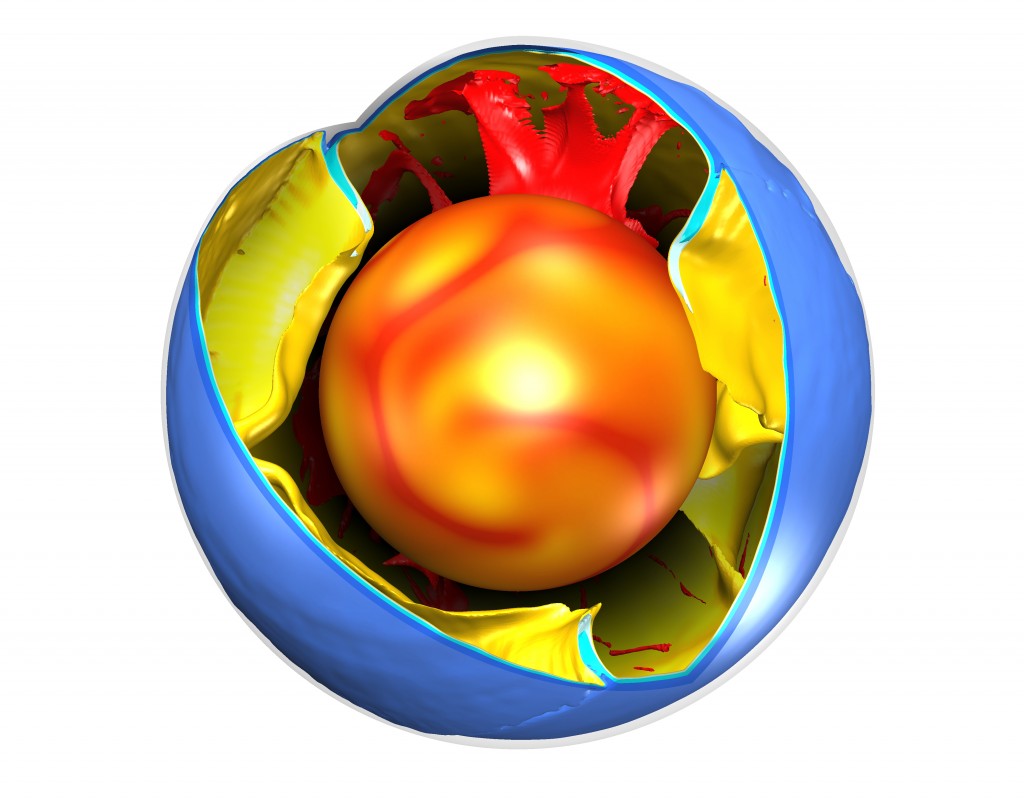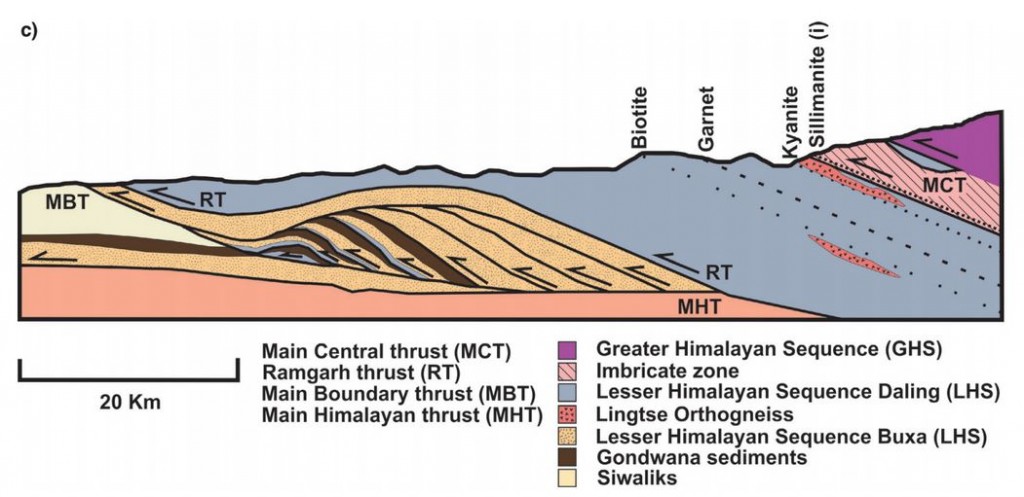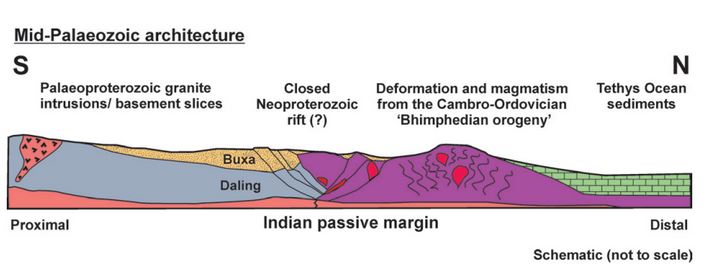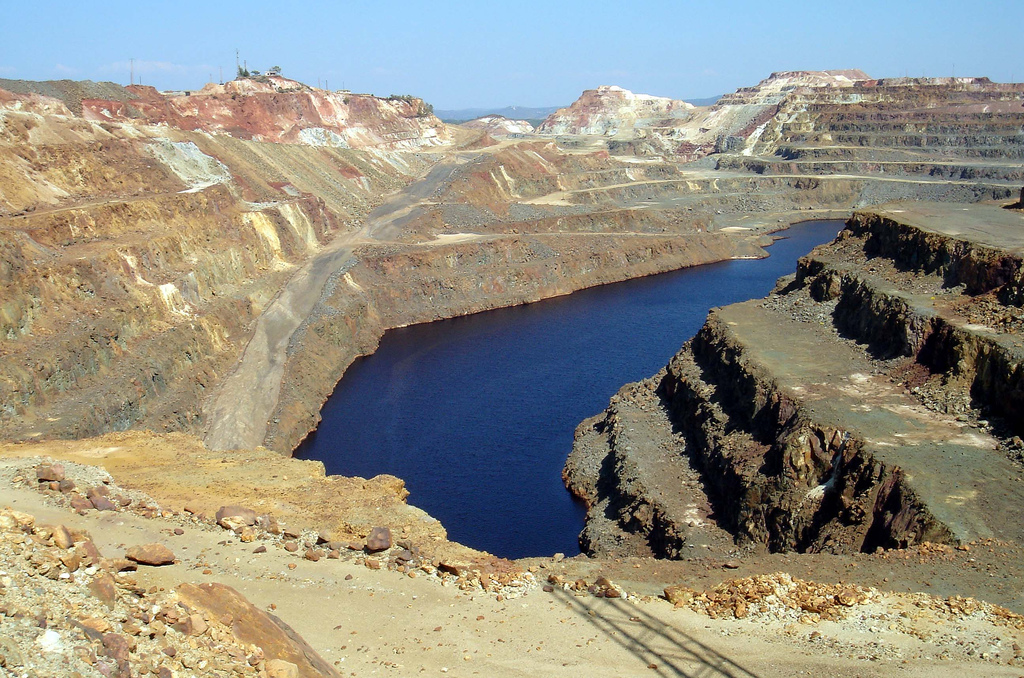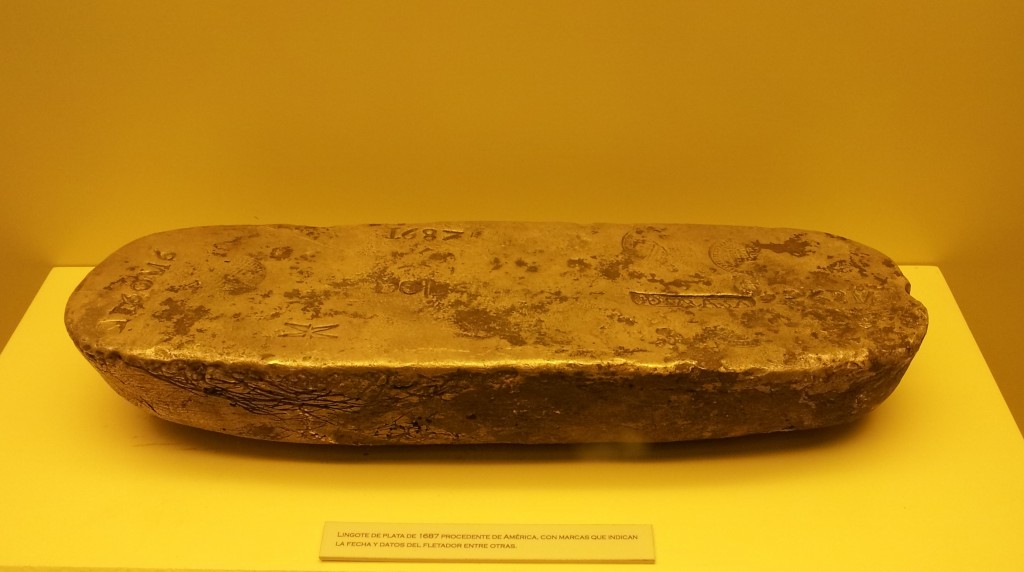High pressure (HP) terranes are areas containing eclogites and other eclogite-facies rocks found within many mountains belts, including the Himalaya and the Alps. HP rocks were metamorphosed at extreme pressures, up to 3 or even 4 billion Pascals (or GPa. Atmospheric pressure is 0.0001 GPa). Based on the assumption that metamorphic pressure relates to depth of burial, these rocks have been to depths below the base of the crust. Explaining how to bury rocks so deeply, and then bring them back again, is a tricky problem.
Two parallel threads of research are challenging the assumption that high metamorphic pressures relate simply to depth of burial. Both seek to show that metamorphic reactions, and the patterns of minerals that they form, are also influenced by the squeezing and squashing rocks receive as they flow deep within the earth.
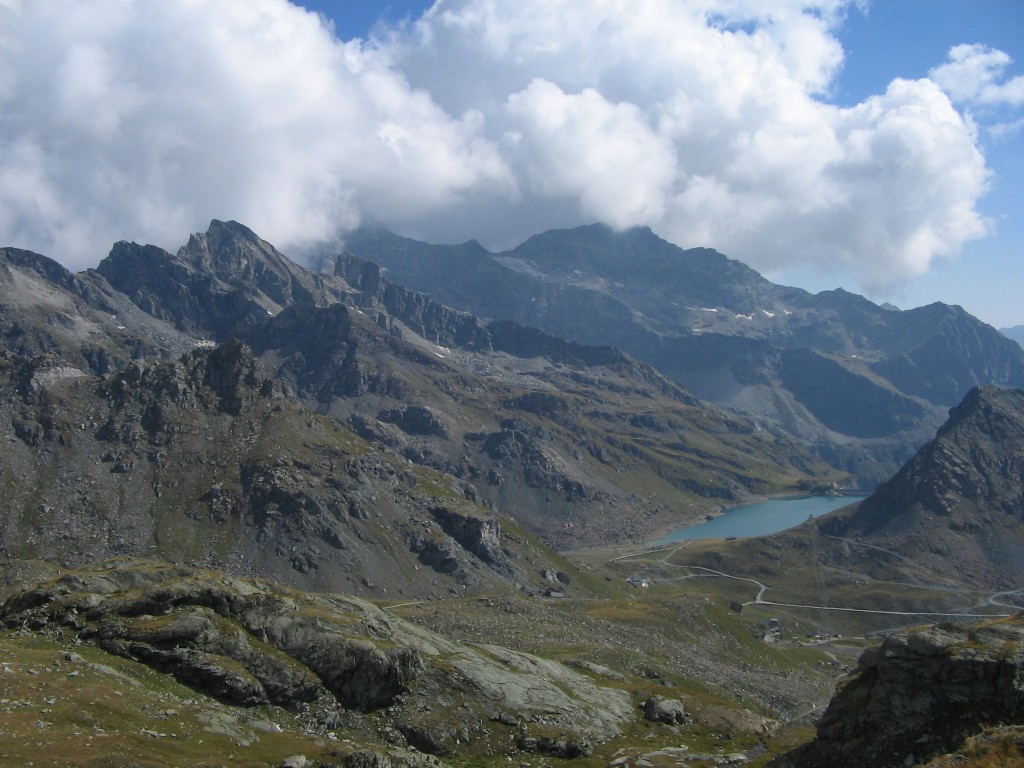
High pressure rocks looking moody and gorgeous. Photo of the Internal zones of the Alps from John Wheeler.
A little theory (please, don’t get stressed)
Metamorphic petrology is the art and Science of calculating the conditions under which metamorphic minerals form – I’ve written extensively about it already1. It has its basis in an understanding of the thermodynamics of the reactions that form minerals, which depend (among other things) on the temperature and pressure at the time. The lithostatic pressure that affected the rock is assumed to be caused by the weight of the column of rock overhead, following Pascal’s law2. With some assumptions as to the density of that rock, pressure can be converted into depth.
Earth scientists who study the structure of deeply buried rocks look instead at the patterns that the minerals form: fabrics, lineations, folds and the like. They have a different way of looking at the way rocks are squashed. Theories of rock deformation talk about stress, often visualised as arrows in 3 dimensions. If the stress is isotropic – equal in all three dimensions – then it is conceptually the same as lithostatic pressure. In contrast, differential stress is where the arrows are different sizes. Differential stress drives deformation – the rocks change shape.
Time for an analogy. Lithostatic pressure is like water pressure. Deep hot rocks flow like a fluid (slowly) and so the stress is equal in all directions. Rocks keep the same shape, but are put under tremendous pressure. It’s the same as putting a styrofoam cup into deep water.

Sytrofoam cup crushed at 600m ocean depth. Image from Gina Trapani under Creative Commons.
Differential stress is like putting the cup between the grabbers of the submersible. Squeezing in only one direction will change the shape of the cup.
Now we’re ready to look at the two challenges to the depth-pressure connection.
Challenge 1 – High levels of differential stress exist in the crust
Metamorphic petrologists who argue that high pressures are caused by deep burial believe that the effects of differential stress are unimportant. These rocks are usually extremely deformed, but they were hot and soft – by flowing easily they prevented high differential stresses from building up. In a similar way, as every toddler learns, you can’t squeeze jelly hard with your hands, because it just flows out of your fist.
Some scientists, with an interest in the European Alps, disagree. Neil Mancktelow argues that the effects of differential stress (he uses the basically equivalent similar term ‘tectonic overpressure’3 ) can be dramatic. Mathematical modelling of conditions within a confined channel (like a subduction zone) gives ‘overpressure’ of “perhaps even a few GPa”. Rocks that formed under these conditions would yield high pressure minerals but may not have been buried very deep.
At this years EGU meeting Stefan Markus Schmalholz, Yuri Podladchikov, and Sergei Medvedev used computer modelling of the Alpine orogeny, and other arguments to suggest that Alpine high-pressure eclogites need not have been deeply buried, but instead their distinctive minerals formed under conditions of tectonic overpressure.
Challenge 2 – John Wheeler’s recent paper in Geology
Computer models are extremely useful, but only as good as the assumptions made in them. Alone they will always have their critics. John Wheeler, a professor at Liverpool University has fingers in many pies: metamorphism; structural geology; field-based studies; laboratory work… He takes a different approach to also puts the assumption that we can apply Pascal’s law under intense pressure 4.
In a recent open source paper in Geology he combines 2 pieces of theory. The first is from thermodynamics as used in metamorphic petrology. The second is an equation relating stress to the phenomena of pressure solution (that can form cleavage in slaty rocks). Both are concerned with the movement of atoms to grow new minerals and neither is controversial. He converts both into terms of chemical potential and combines them to link differential stress to standard metamorphic reactions.
Applying uncontroversial values for differential stress (e.g. 50 MPa, or 1/40th of the levels Mancktelow proposes) to a standard metamorphic reaction he shows that they shift by up to 500MPa – equivalent to 15km of lithostatic pressure.
This is an extremely dramatic result from a provocative paper, as John Wheeler himself acknowledges. Metamorphic rocks are almost always deformed, sometimes dramatically so. If both approaches are correct, then putting differential stresses of Manckletow levels into John Wheeler’s equations suggests any estimates of depth of metamorphism are open to challenge. Maybe eclogites never left the crust after all?

Metagabbro deformed and recrystallizing to new minerals at the same time (sample from Alps image from John Wheeler).
Where are we now?
John Wheeler expects some “turbulent interactions in the next few years”. I’m sure there are metamorphic petrologists writing their replies to his paper right now. But assuming they can’t find some fundamental flaw he hasn’t spotted (extremely unlikely, I’d say), metamorphic petrology is facing a very big challenge.
This seems like bad news. Much work on metamorphic petrology is put to work refining tectonic models by building P-T-t paths that track metamorphic rocks as they are buried and return to the surface. The error bars on these estimates were big enough already – now a entire literature of estimates that ignore differential stress are thrown into question.
But let’s think positively. Might there be ways to disentangle the effects of lithostatic pressure and differential stress? Might there be ways to get even more information out of deformed metamorphic rocks? John Wheeler certainly thinks so and he aims to get there by integrating detailed studies of rock samples with laboratory experiments.
Big advances in Science often give us new ways to understand evidence that previously didn’t make sense. Studies of metamorphism from the classic locality of the Scottish Highlands (e.g. Viete et al 2011) have noted that the highest grades of metamorphism occur within shear zones. They tried to explain this in terms of the flow of hot fluids, but maybe the answer is simpler: stressing rocks really does cause them to grow different suites of metamorphic minerals.
References:
Mancktelow N.S. (2008). Tectonic pressure: Theoretical concepts and modelled examples, Lithos, 103 (1-2) 149-177. DOI: http://dx.doi.org/10.1016/j.lithos.2007.09.013
Wheeler J. (2014). Dramatic effects of stress on metamorphic reactions, Geology, DOI: http://dx.doi.org/10.1130/g35718.1
Viete D.R., G. S. Lister & I. R. Stenhouse (2011). The nature and origin of the Barrovian metamorphism, Scotland: diffusion length scales in garnet and inferred thermal time scales, Journal of the Geological Society, 168 (1) 115-132. DOI: http://dx.doi.org/10.1144/0016-76492009-087



